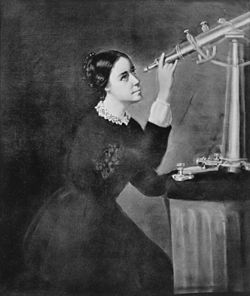

This is a timeline of women in science, spanning from ancient history up to the 21st century. While the timeline primarily focuses on women involved with natural sciences such as astronomy, biology, chemistry and physics, it also includes women from the social sciences (e.g. sociology, psychology) and the formal sciences (e.g. mathematics, computer science), as well as notable science educators and medical scientists. The chronological events listed in the timeline relate to both scientific achievements and gender equality within the sciences.
Contents
- Ancient history
- Early post-classical history
- Middle Ages
- 16th century
- 17th century
- 18th century
- Early 19th century
- Late 19th century
- 1870s
- 1880s
- 1890s
- Early 20th century
- 1900s
- 1910s
- 1920s
- 1930s
- 1940s
- Late 20th century
- 1950s
- 1960s
- 1970s
- 1980s
- 1990s
- 21st century
- 2000s
- 2010s
- 2020s
- See also
- References
- External links












































